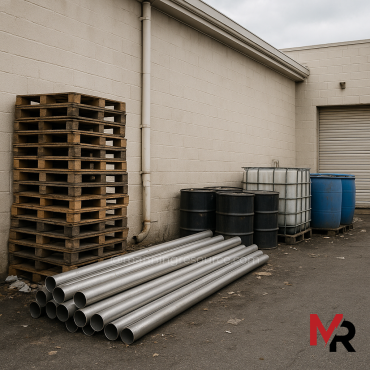Discoloration on the inside of your stainless-steel tank, whether it’s rouging, rainbow hues, or rust-like stains—should raise an immediate red flag. These marks aren’t just cosmetic; they’re indicators that something has shifted in your CIP (Clean-In-Place), sterilization, production process, or even your recent maintenance work.
If this discoloration is new for your operation, it’s a signal that your system’s chemistry, temperature, water quality, or mechanical work has changed. Don’t ignore it.
What Might Be Happening?
Here are some potential issues behind the discoloration:
- Chemical Imbalance: Inconsistent or overly aggressive chemical concentrations in your CIP system.
- Temperature Extremes: Overheating during sterilization or CIP, causing changes in the oxide layer of stainless steel.
- Water Quality Issues: Increased mineral content or chlorides in water used for cleaning or rinsing.
- Mechanical Factors: Increased turbulence, erosion, or improper cleaning cycle parameters.
- Residual Product Buildup: Changes in product formulations or ingredients that interact with stainless steel.
- Welding or Grinding Work: Recent repairs or modifications to your tank can disturb the protective passive layer of stainless steel, introducing rough surfaces that attract discoloration and corrosion.
What Should You Do?
- Contact Your Chemical Supplier: They can test your system and provide guidance on proper chemical concentrations and application methods.
- Consult a Stainless Cleaning Expert: They can assess whether the discoloration is superficial or if it’s penetrating the passive layer of your stainless steel.
- Audit Your Process: Look for recent changes in water quality, product formulas, cleaning agents, or operating conditions that may have triggered the issue.
- Review Recent Work Orders: If welding, grinding, or repairs were performed, ensure the area was properly passivated to restore the stainless surface.
- Conduct a Visual Inspection: Check for surface roughness, pitting, or cracking that might signal deeper damage or contamination.
Prevention Tips to Keep Your Tanks Protected:
- Standardize and Document Cleaning Protocols – Ensure consistent, validated CIP cycles and chemical concentrations.
- Monitor Water Quality – Test for hardness, chlorides, and other factors that can attack stainless steel.
- Maintain Equipment – Inspect and service spray balls, seals, and gaskets that can contribute to mechanical wear.
- Train Your Team – Ensure operators know how to recognize early signs of discoloration and when to escalate the issue.
- Document Maintenance Work – Ensure any welding, grinding, or mechanical repairs are followed by proper cleaning and passivation procedures.
- Periodic Passivation – Use approved passivation treatments to restore and strengthen the protective oxide layer.
Discoloration in your tank doesn’t just happen, it’s a symptom. If you’ve never seen it before, something has changed. Whether it’s chemical, mechanical, or related to recent welding or grinding, investigate the root cause, correct it, and implement preventative measures to protect your equipment and product integrity.
This is an AI generated image.




Add Comment